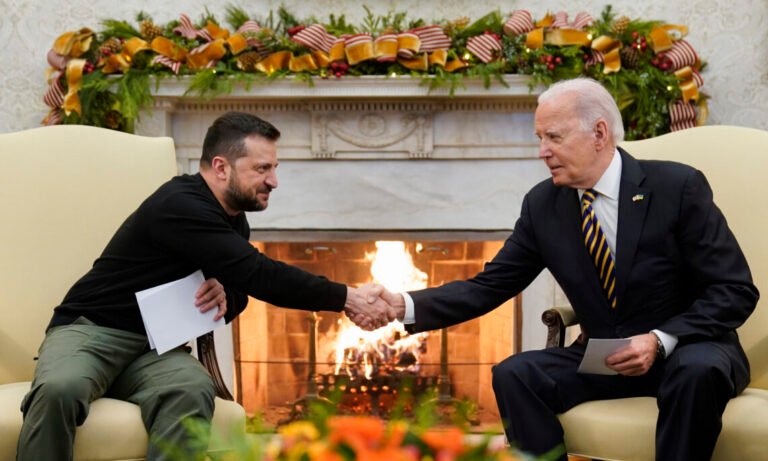Washington D.C – In a significant escalation of Western support for Ukraine, President Joe Biden has authorized the use of U.S.-supplied long-range missiles to target specific sites within Russian territory. This decision coincides with similar approvals from the United Kingdom and Germany, signaling a unified shift in Western strategy against Russia’s aggression. The policy changes, announced on Sunday, November 2024, mark a potential watershed moment in the Ukraine conflict.
For much of the war, the U.S. and European nations imposed strict limitations on the use of Western weapons, confining their deployment to Ukrainian territory. Biden, in particular, was cautious about providing tools that could lead to strikes within Russia, fearing escalation into a broader NATO-Russia conflict. However, growing frustration with Russia’s continued offensives and escalating attacks on Ukrainian civilian and military infrastructure have prompted a reevaluation.
The UK and Germany, key NATO members, announced similar policy shifts shortly before Biden’s decision, citing the need to address an evolving battlefield. Both countries emphasized that Ukraine’s use of advanced weaponry within Russian borders would be limited to high-value military targets, such as command centers, logistical hubs, and missile launch sites involved in strikes against Ukraine.
Strategic Implications
These coordinated policy changes by the U.S., UK, and Germany reflect a broader consensus in the West: maintaining the status quo was no longer tenable. Analysts suggest several key implications for the war:

Allowing Ukraine to conduct limited strikes within Russia introduces new vulnerabilities for Moscow. Russian military planners, who have largely operated with impunity beyond their borders, must now divert resources to defend critical sites. This could strain Russian logistics and blunt the momentum of their offensives in Ukraine.
The policy shifts carry significant risks. While the strikes are intended to target military infrastructure, any significant damage to civilian areas or high-profile locations could provoke a disproportionate Russian response. This includes potential cyberattacks on Western nations or attempts to expand the conflict into neighboring NATO states.
For Ukraine, the ability to strike strategic targets in Russia is a powerful symbolic victory. It signals increased Western confidence in Ukraine’s capabilities and a commitment to supporting the country’s defense efforts more robustly.
The timing of the decisions raises questions about their broader geopolitical motives. Critics argue that Biden’s policy shift could complicate the efforts of President-elect Donald Trump, who has vowed to negotiate a swift resolution to the conflict upon taking office. By strengthening Ukraine’s hand now, Biden and European allies may be trying to preemptively limit Trump’s ability to broker a settlement that could involve concessions to Russia.
Biden’s Legacy and Trump’s Challenge
President Biden’s decision appears to be as much about shaping his legacy as it is about aiding Ukraine. With his administration nearing its end, Biden may be seeking to solidify his stance as a staunch defender of democratic values against autocratic aggression. However, the move also sets the stage for potential friction with the incoming Trump administration, which has criticized Biden’s handling of the war and pledged to pursue peace talks that prioritize U.S. interests.
Trump’s proposed approach includes reducing military aid to Ukraine and pressuring Kyiv to negotiate with Moscow. By empowering Ukraine with more advanced weaponry and the ability to strike within Russia, Biden and his allies may be laying the groundwork for Ukraine to negotiate from a position of greater strength. This could make it harder for Trump to shift U.S. policy without appearing to abandon Ukraine in its most critical hour.
The Western policy changes represent a gamble. They reflect a calculated effort to disrupt Russian operations and potentially hasten an end to the war. Yet, they also open the door to significant uncertainties, including the potential for unintended escalation.
As the situation unfolds, the decisions made in these final months of Biden’s presidency will likely shape the dynamics of the conflict well into the next administration. Whether this marks a turning point in Ukraine’s favor or escalates the war to new and dangerous levels will depend on how Russia, Ukraine, and the broader international community respond in the weeks and months to come.

